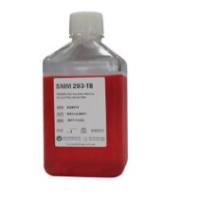Human synovial cells in culture, particularly those obtained from patients with rheumatoid arthritis, secrete a number of matrix metalloproteinases (MMPs) into the culture medium. Enzymes secreted include collagenases (MMP-1, MMP-13), gelatinases (MMP-2 and MMP-9), and stromelysin 1 (MMP-3). These enzymes are usually secreted as inactive zymogens, which can be activated in vitro by treating with proteinases or mercurial compounds such as 4-aminophenyl mercuric acetate (APMA) (1 ). The activity of these enzymes, both in their zymogen and mature form, can be analyzed by zymography. This electrophoretic technique, described as early as 1966 (2 ), allows visualization of the number and approximate size of proteinases in complex biological samples (3 ). A protein substrate, often gelatin, is copolymerized with the poly-acrylamide gel, and samples are electrophoresed in sodium dodecyl sulfate (SDS). Following electrophoresis, the resolved proteinases are renatured by exchange of the SDS for a nonionic detergent, such as Triton X-100. The gel is then incubated in a buffer suitable for proteinase activity, enabling the renatured proteinases to hydrolyze the copolymerized protein substrate in a zone around their electrophorezed position. Once stained, these zones of digestion are clearly visible as light areas against the darkly stained protein background. This simple technique is highly sensitive, particularly for gelatinases A and B (MMP-2 and MMP-9), picogram quantities of which can be detected (4 ). Some applications and limitations of the technique are described.






